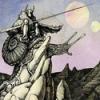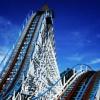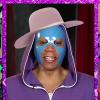Ask the Experts / Architecture and Landscape Tutorials
-
 20-November 15
20-November 15
-

 F0ndue
Offline
F0ndue
Offline
So, this may be a bit of a stupid thing to post, but NVM. What really bothers me with myself is that I have many ideas, but not the skill required to make things look good. Particularily architecture and landscaping are very hard for me. My buildings always end up too big, and are just very monotonous. My landscapes are pretty bad as well, its all just rounded off with no edges or cliffs (and when I try something it juts looks odd), and whenever I try to use other textures it looks awful. I attribute all of this to me just kind of unconsciously sticking to my own conventions, which results in everything looking really bland and reptitive. So, can anybody recommend me some decent tutorials?
-

 Mattk48
Offline
Mattk48
Offline
I dont think your going to find a tutorial like that, your talking about something very subjective, not objective. So it cant really be taught. I would recommend downloading accolade winning parks that have similar elements to what your going for, and look at them. Tear them apart, delete objects, move stuff around, try to understand what is were and why. Measure the buildings, see how many height units a floor is, play with the landscaping a little bit. This may not be the answer your looking for, but I dont think this is the sort of thing that your gong to find a tutorial for.
Best of luck
-
![][ntamin22%s's Photo](https://www.nedesigns.com/uploads/profile/photo-thumb-221.png?_r=1520300638)
 ][ntamin22
Offline
][ntamin22
Offline
I had a landscape (tutorial? discussion? lecture? ramble?) up at one point; I'll do what I can to summarize here since it got lost in the Twitch shuffle.
As always when I post something like this, my opinion only, loose guidelines open to individual styles, exceptions, interpretation, etc.
]['s Foliage theses
1: There are only two kinds of plant in any park; naturally occurring and decorative.
Once you have determined which kind of plant you're dealing with, you have a great head start on what it should look like. Is this patch of foliage a planter near some path - somewhere in guest sight where park maintenance can reach it? Decorative. Forest out behind a coaster turnaround? Wild. If it is natural foliage, then all you need to do is make it look natural- I suggest you emulate nature. What grows in the climate zone your park is in? Does it grow in huge forests, tiny clumps, spotty patches? Is it mostly low bushes and shrubs with a few tall trees, or is it mostly old-growth forest with little underbrush? If it is decorative foliage, then all you need to do is make it look good.
2: All foliage is a tool to direct the viewer's attention.
Who doesn't love tree-lined walkways, shaded entirely by big, leafy canopies? RCT players. They make it hard to see your park. I don't just mean covering a path with trees, I also mean blocking lines of sight with foliage. This is one of the big contributing reasons to why a wedge-shaped approach to foliage has grown over the years at NE. Similarly, it may not be realistic to have a whole bunch of shrubbery piled up at the edges of your park path so there's just a big wall of plant - but in RCT it helps to serve a very practical function of creating a flat, evenly-toned space so the viewer's eye isn't stuck on it for too long. Big spaces filled with similar foliage read as "blank" areas, and areas where the there are "holes" in the foliage placement draw attention to themselves. A smart parkmaker (or landscape architect, or graphic designer, or writer...) can use this idea of positive and negative space to help highlight the exciting things. If that sounds complicated, note that a lot of real-life property management practices have helped make this a trend in RCT as well - park maintenance often cuts back trees and shrubs in a perimeter around coasters to prevent the plants interfering with the ride. Do the same thing in RCT and boom - your ride stands out against a backdrop.
-
![][ntamin22%s's Photo](https://www.nedesigns.com/uploads/profile/photo-thumb-221.png?_r=1520300638)
 ][ntamin22
Offline
][ntamin22
Offline
For Landscaping I haven't developed as much of a manifesto, but it might be helpful to try a fractal approach.
Start with the biggest unit you have - a whole park. what is the landscape trend for the whole park? maybe it is a canyon, a hill, a river, whatever. let's say it is a gentle valley with a stream in the middle.
Then break that down into smaller units- what happens on this third of the park? Maybe the valley widens here, so we'll slow down the slope of the hill(s) and maybe the stream widens out, slows down and winds more. On the opposite third, maybe the valley steepens, the stream banks get taller, maybe a few little rapids or waterfalls. and there's a hint that some mountains are over off the edge of the map. Great!
Now take one of those sections and break it into thirds. What happens in each third that makes it different and interesting and blends it together with its neighbors? Add features where they feel like they should go, or make sense from what you know about the natural world, whatever matches your intention for the park. Use imagery for reference if you have a specific area in mind! An island in the stream here; a rocky outcrop there to help make the next section over a little steeper and help tell your story.
If you ever find yourself facing a big bland area with the same characteristics throughout, try dividing it into smaller sections and finding ways to connect those sections up. If it works for the story of the broader area that a whole big piece of land is flat - sure, go for it! If you zoom out and say - maybe I can make this feel more like what I want my park to feel like - go for it. I want a calm, relaxed feel - maybe this cliff should go. I want a huge hill; maybe it would feel better if there were smaller hills leading up to it.
-

 posix
Offline
posix
Offline
The solution is to make mistakes. You have to try out lots of different things and allow yourself the liberty to fail. It really doesn't hurt to just explore on a workbench with stuff you will never release. You have to test different looks and experiment until you find something that catches your interest.
-

 robbie92
Offline
robbie92
Offline
Constantly experiment. Download some parks that have the type of work you emulate and dissect them; start dismantling the work, deleting objects, and figuring out how everything comes together. Just start combining objects to get the right feel that you're looking for. Go search for inspiration pictures online, find something outside of RCT, or even within it, to emulate. As much shit as we give the people who copy, copying is a great way to understand how to properly execute some interesting object combinations. Don't be afraid to fail or make something that doesn't look nice; it's worth the experimentation.
-

 Louis!
Offline
Louis!
Offline
if in doubt, do what most people do, copy rob and then complain that all RCT looks the same
 Tags
Tags
- No Tags
